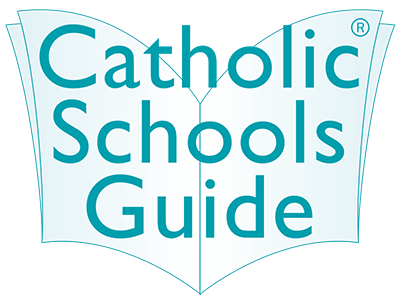News and Media

Catholic Schools in the Digital Age by John Phelan
For more than two centuries from the mid-1700s, education changed little. Teachers took their places at the front of the classroom and imparted knowledge to students, with the assistance of books, other resources and tools – ranging, over time, from the slate to the exercise book, and from the abacus to the pocket calculator.
And then it all changed.
In the last few years of the twentieth century, computer technology was introduced on a wide scale across the education sector. Laptop computers were first introduced to secondary schools in Australia in the early 1990s, quickly moving into primary schools within a few short years.
Teachers embraced the digital age, learning how to integrate technology across the curriculum. No longer was there a ‘computer lab’ with the precious resources under lock and key; now, every classroom had access to the new technology.
The introduction of digital technology in education has been an enormous revolution. And it has brought with it a completely new skillset for students, teachers – and parents.
Curriculum
The most obvious application of digital technology in education is in the delivery of curriculum. Instead of a single textbook, students can draw information from literally millions of sources all around the world.
This has many advantages, but also numerous pitfalls. Anyone can publish anything on the internet. So how do students know what is credible and what is not?
Schools quickly understood the need to provide students with a new skill – what has generally been called ‘digital literacy’. In the same way that students need to be able to read and write, they also need the ability to find digital information, discern what is credible and useful and what is not, and use that information to its best effect.
In the primary years, students are provided with a range of strategies to assist them in searching for material and ways in which they may use it. As they progress into secondary schooling, more refined strategies are used.
Throughout these processes, good schools make sure parents are kept fully informed. Education is always a partnership between the home and the school, and it’s important that parents know what technology is being used by their children. This also ensures parents are able to provide assistance to their sons and daughters – even though the children probably know more about the technology than their parents ever will!
Many schools now use online learning management systems to provide students with immediate access to course materials and to a range of learning tools.
These systems allow students and teachers to collaborate, communicate and create. Source materials are provided, students are able to submit work or participate in subject discussions, and teachers are able to provide immediate feedback.
There’s no need for students to lug heavy textbooks and workbooks around with them; the majority of course materials can be made available through a secure learning portal, accessed through their individual password-protected learning management accounts.
Online Safety
The widespread integration of technology has undoubted advantages, but it also has a darker side. Students are warned of the dangers of accessing and using inaccurate or inappropriate information, and of the ways in which misuse of digital technologies can prove harmful to themselves or others.
Students are asked to agree to acceptable-use policies which require them to not access inappropriate sites, plagiarise material, or use the technology or information to harm or bully others. Such protocols become progressively more sophisticated as students move through the secondary years.
Many schools also provide parents with a range of strategies to assist them in monitoring their children’s use of technology. Information nights for parents can include details on how to restrict access from their home connections to inappropriate sites, ensuring that young people using computers do so in such a way that other family members are able to see what is on screen, and in guiding their child’s use of social media to ensure their online safety.
Parent Engagement
Digital technology has proven to be a boon for learning and teaching, but it has some other great uses as well. First and foremost, is its ability to streamline communication between the school and the members of its community.
No longer are printed newsletters left to decompose, forgotten, in the bottom of school bags. They are now available on the school’s website and, more helpfully, are often pushed to parents’ email addresses or the school app.
In the past couple of years, school apps have really taken off, with parents in many cases now able to report their student’s absences, provide permission for excursions, make parent-teacher interview times, and even pay their school fees via an app on their smartphone or tablet.
Schools can also use their apps, bulk SMS services and websites to notify parents of events, closures, sporting cancellations and events.
Many schools now also feature dedicated parent and community portals – secure sections of their websites where detailed information about school and student activities and events is available for members of that community.
Such information may also be made available to parents via social media – on school Facebook pages, or through Twitter feeds. The digital information pathways are many and ever-growing.
Technology has changed the face of education and parent engagement over the past twenty years. The future possibilities are endless, but will remain focused on the core mission of schools – to prepare our students for the rapidly-changing world of the 21st century and beyond.

John Phelan is Brisbane Catholic Education’s Manager of Communications and Marketing.
John attended St Joseph’s College, Gregory Terrace, then studied law and journalism, before working as a radio journalist and presenter in Queensland, New South Wales and Victoria. After serving as a member of the Queensland Parliamentary Press Gallery, John worked as a Ministerial Press Secretary in the state government, before moving into local government.
More than twenty years ago, John was one of the pioneers of school communications and marketing in Queensland, serving six years as Director of Public Relations and Marketing for Queensland’s largest independent school, John Paul College, before working in similar roles for the Anglican and Uniting Churches, and as Director of Admissions and Marketing at Brisbane Boys’ College. He ‘came home’ to Catholic education in 2008, joining Brisbane Catholic Education and spearheading its continuing growth and development.

